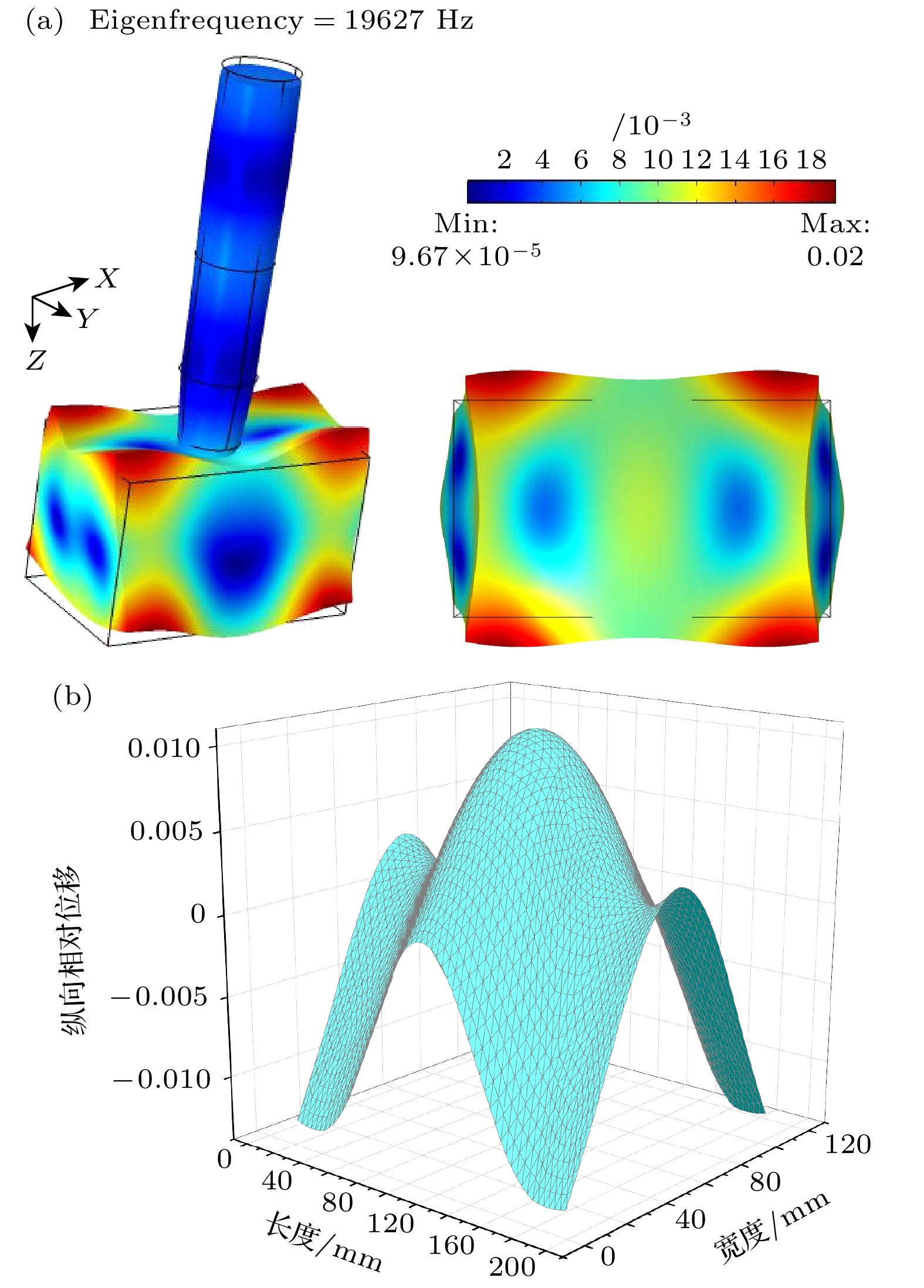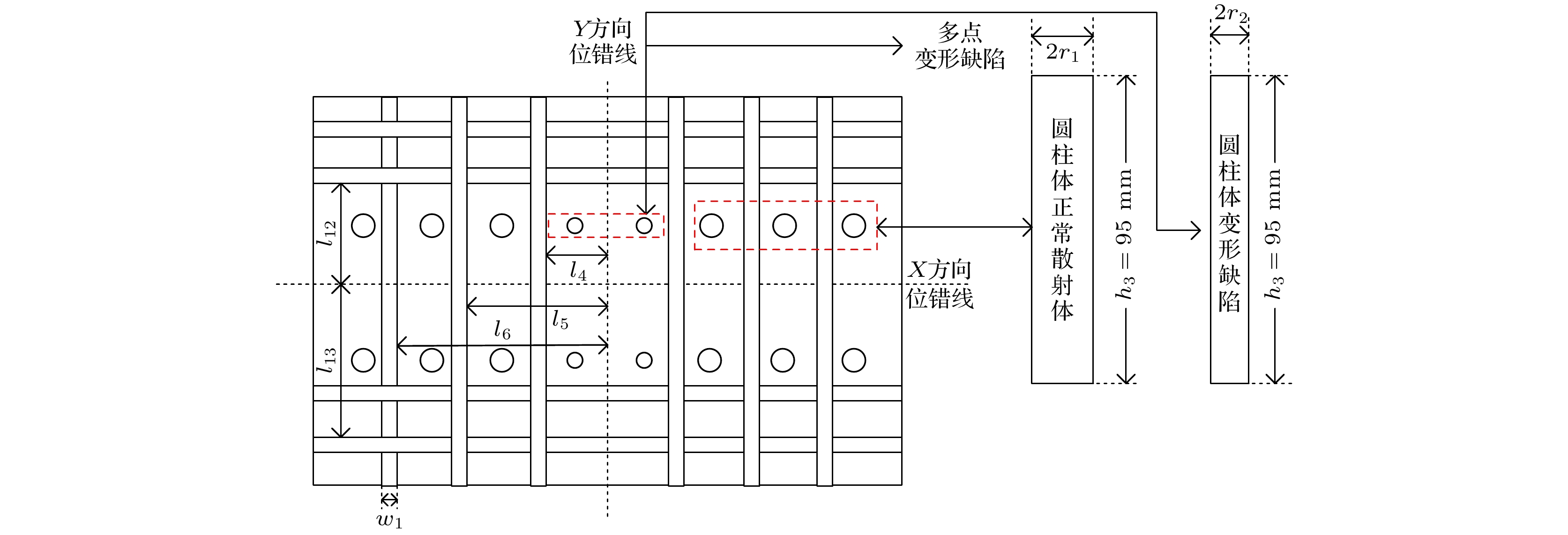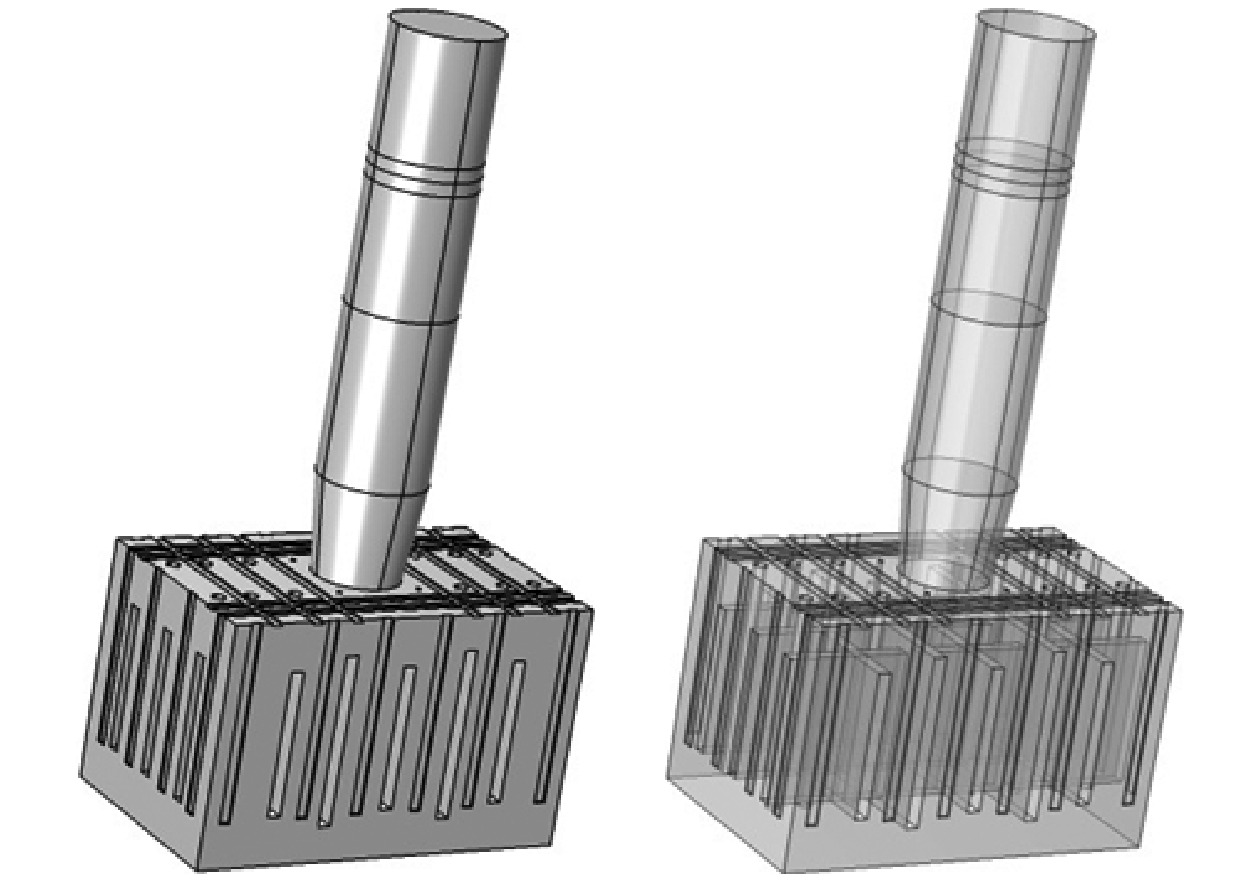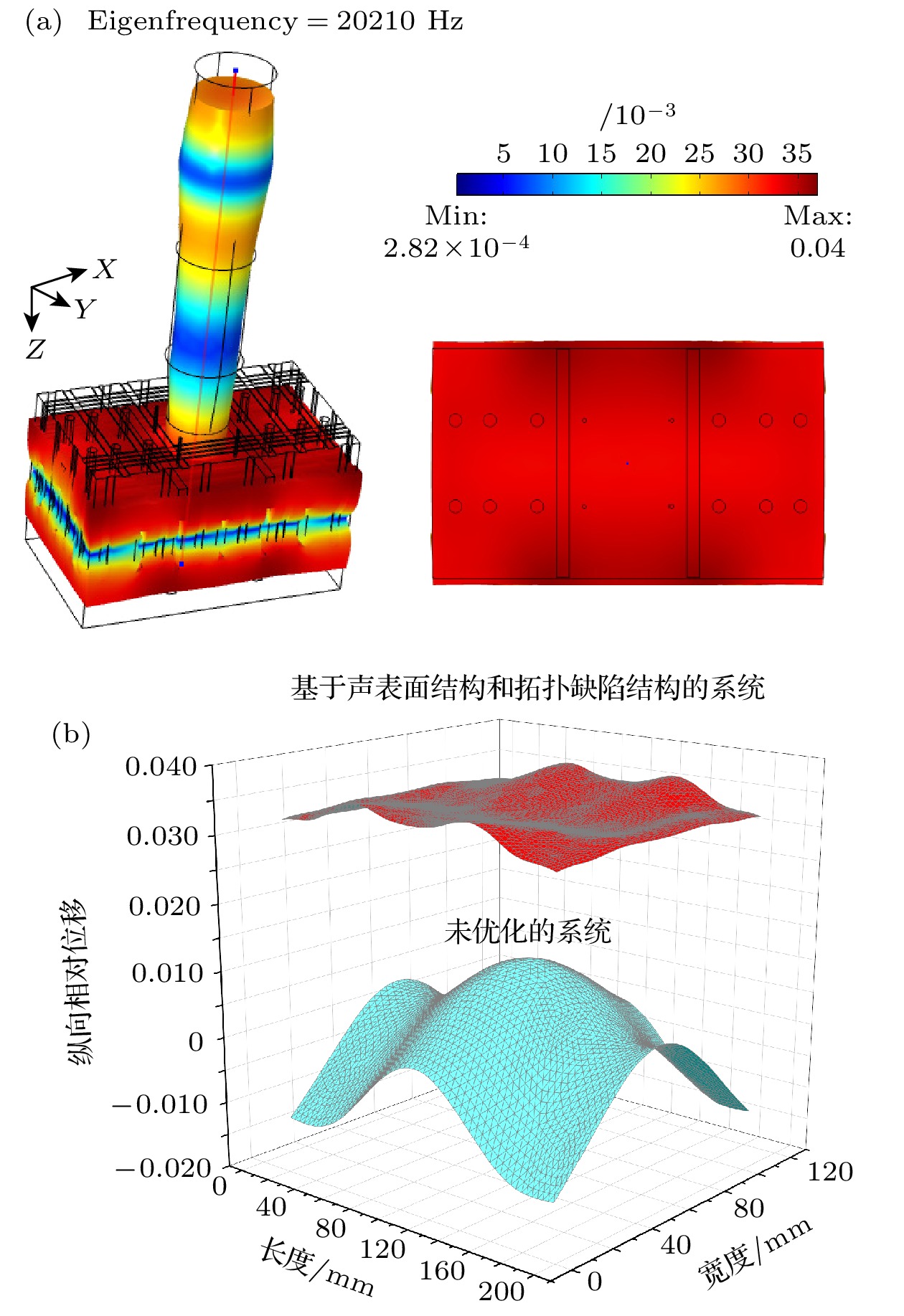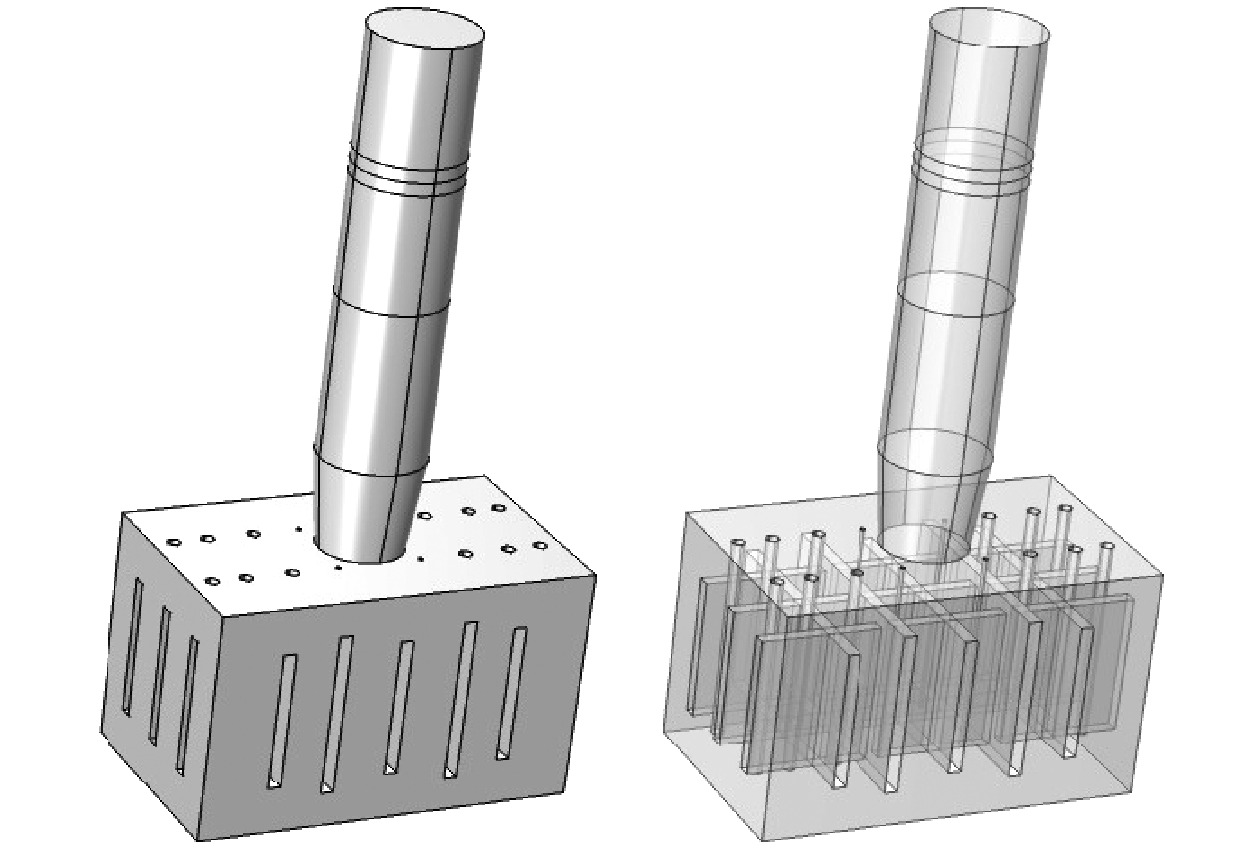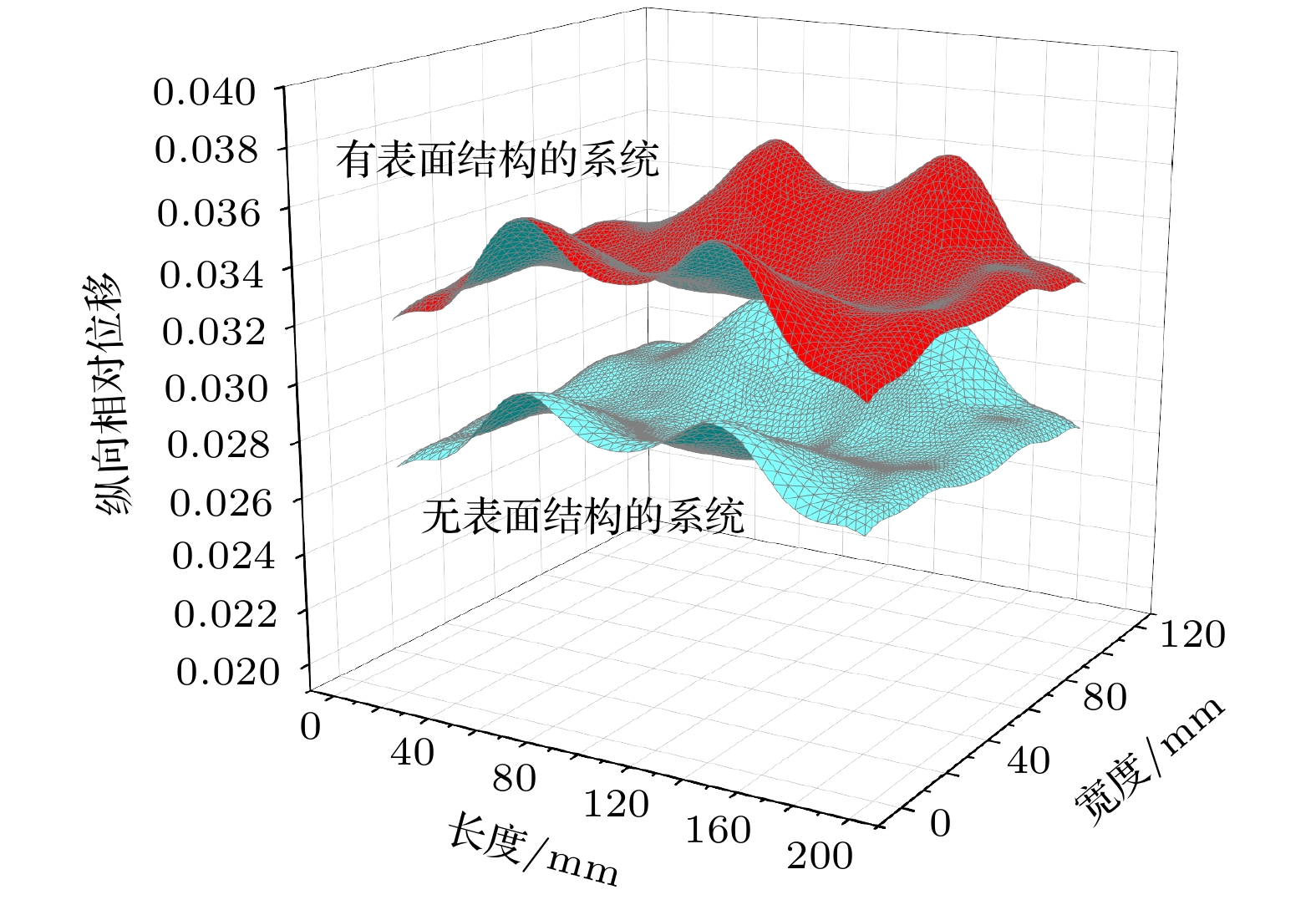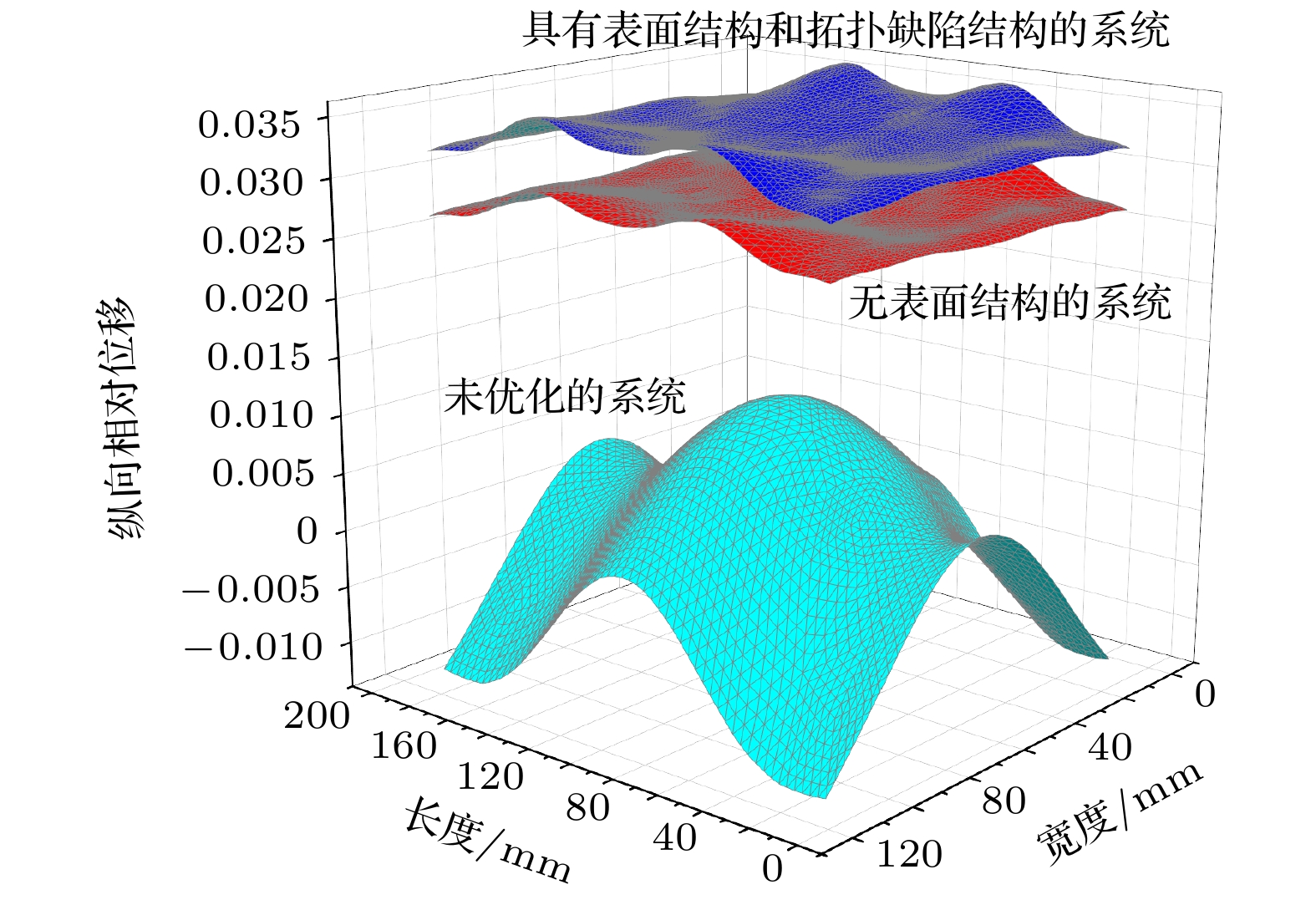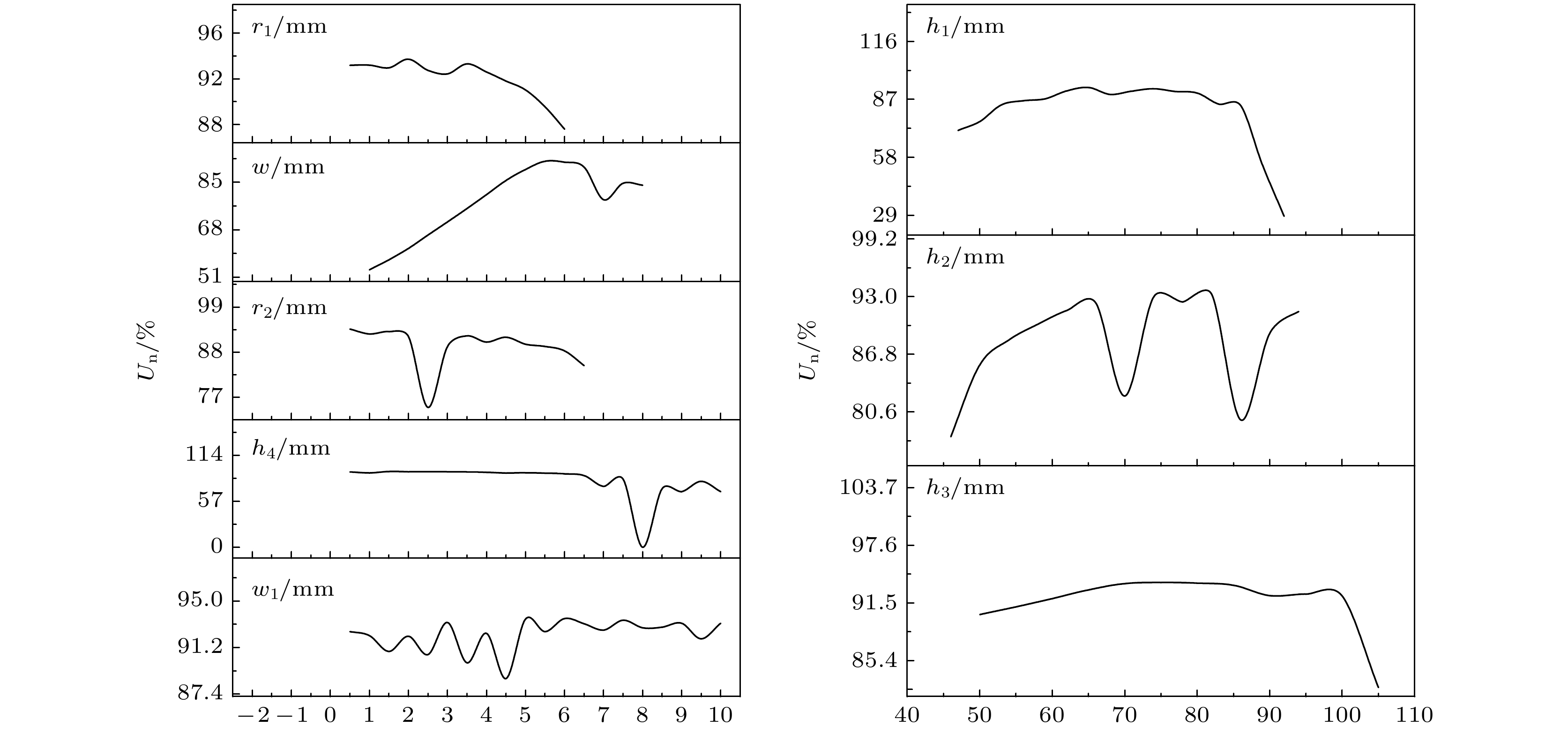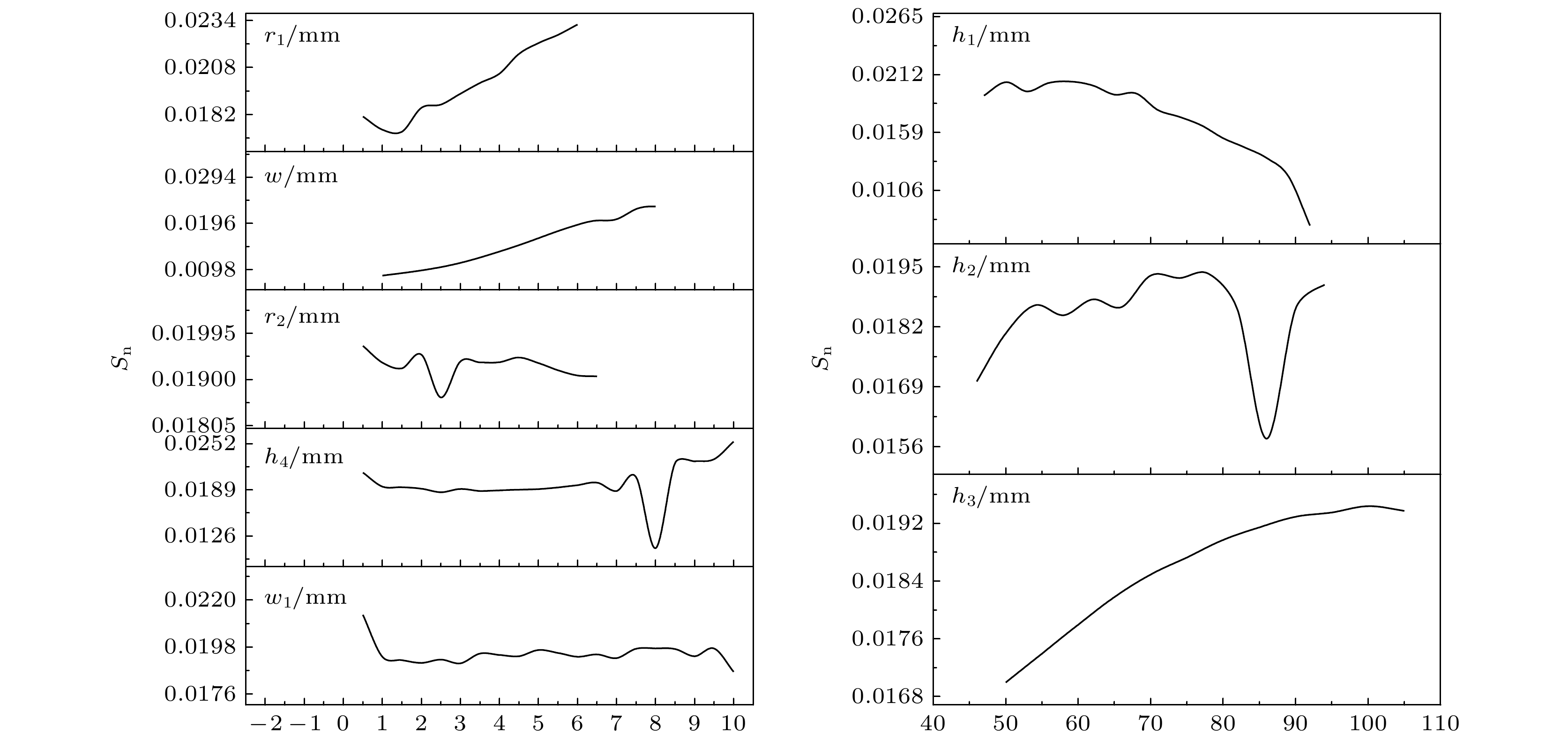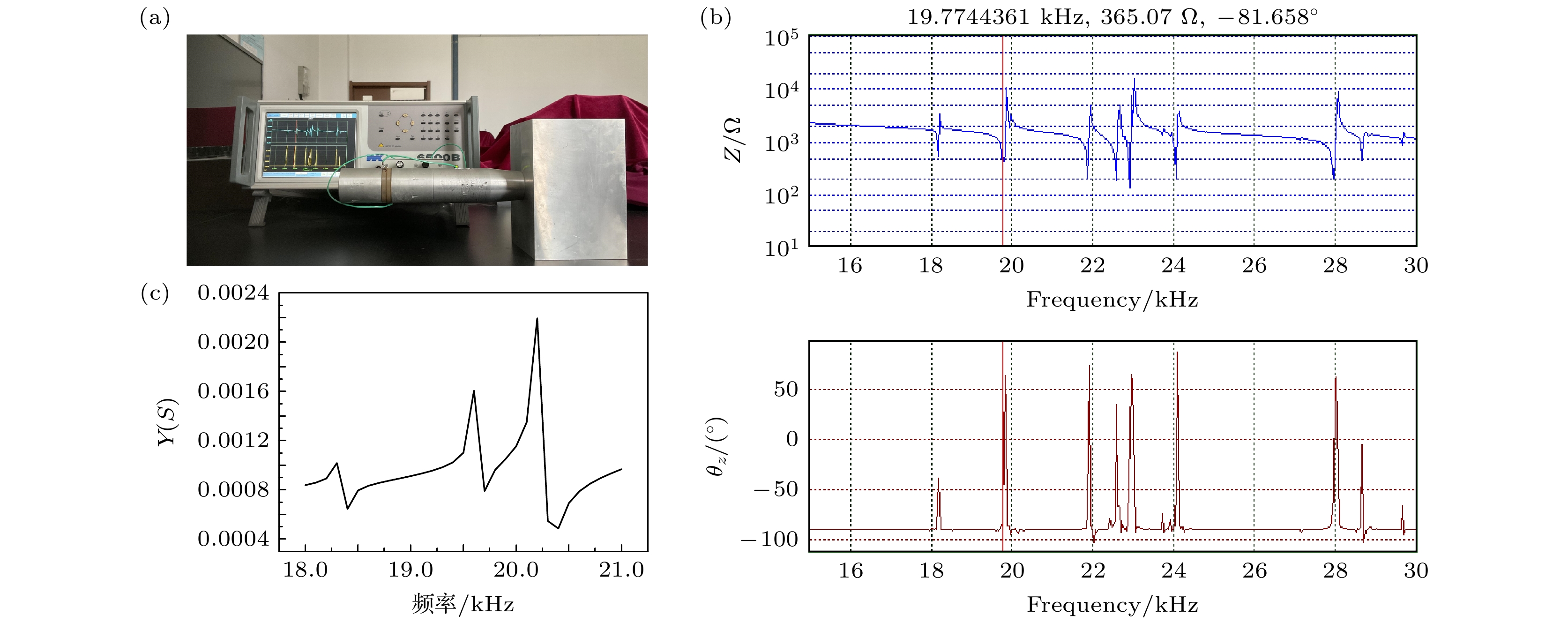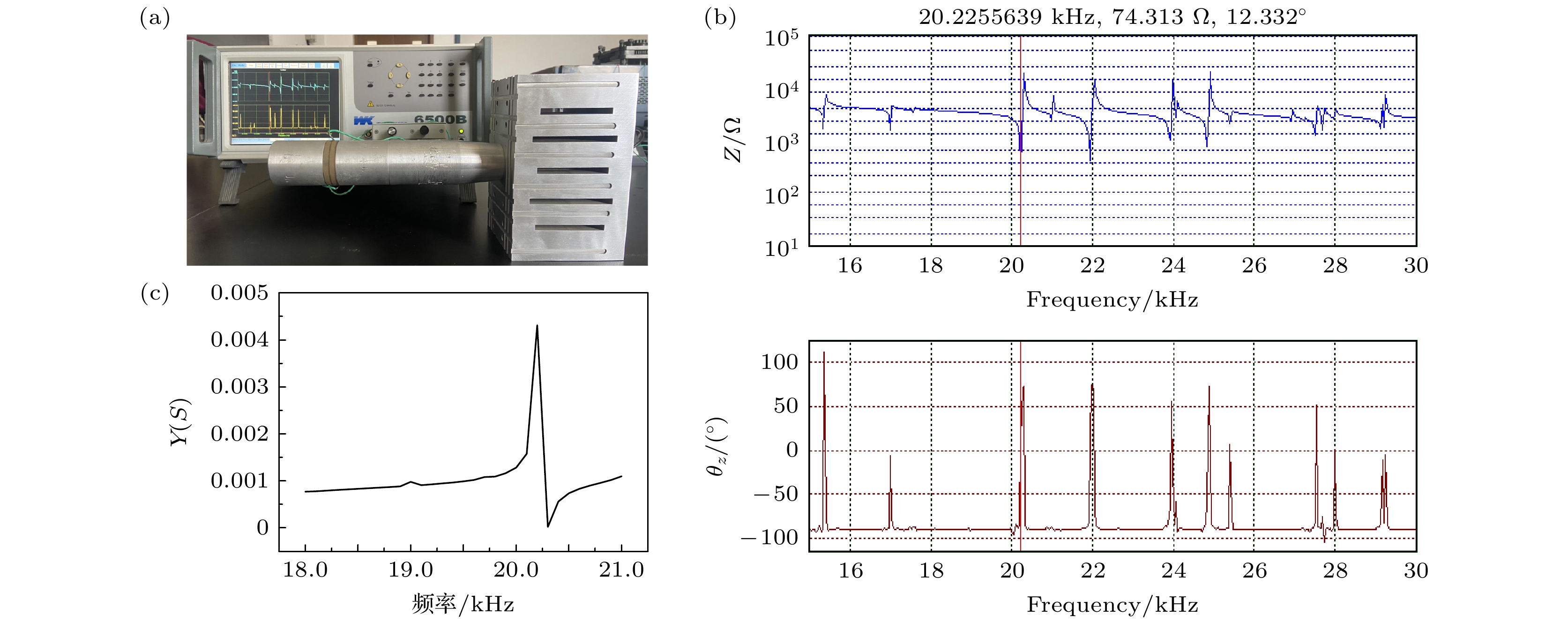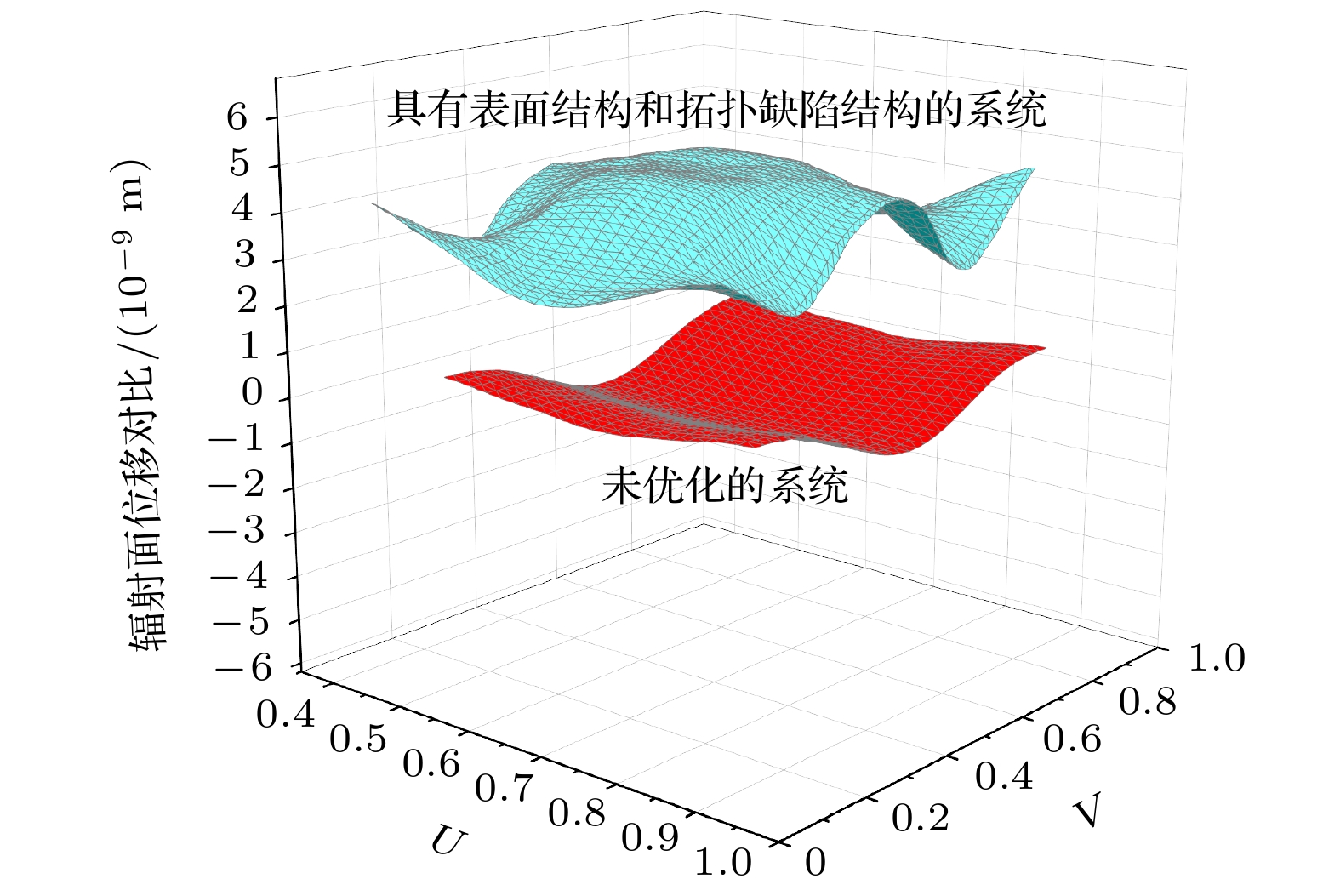-
How to regulate the sound waves in the coupled vibration system of complex power ultrasonic transducers and design high-performance transducer systems has always been an urgent problem in the field of power ultrasound. Research has found that introducing various defects within the transducer system can improve the performance of the transducer coupled vibration system to a certain extent. However, the drawbacks of high loss, narrow frequency band, and sensitivity to structural parameters limit the further practical application of defect type phononic crystal transducer coupled vibration systems. In order to improve the limitations of the coupled vibration system of defect-type phononic crystal transducers, effectively reduce energy loss, and enhance the efficiency of energy transmission, this paper introduces a topological defect structure with energy localization effect and a sound surface structure with high energy transmission efficiency into the coupled vibration system of the transducer. In this study, the acoustic surface structure and topological defect structure are used to excite defect states with energy localization effects and high energy transmission efficiency surface states, effectively regulating the vibration of the transducer coupled vibration system, and constructing a transducer coupled vibration system with high quality factor, low loss, and high energy transmission efficiency. By flexibly designing the geometric size parameters of the acoustic surface structure and defects, the vibration of the transducer coupled vibration system can be effectively controlled, thereby meeting the different functional requirements of the transducer coupled vibration system. However, due to the excessive design parameters of surface structure and topological defect structure, the complexity of the design will be multiplied, greatly reducing the success rate of the design. Therefore, this study uses data analysis technology to establish a performance prediction model for the transducer coupled vibration system, in order to achieve the accurate prediction of system performance and change the shortcomings of low design efficiency and low success rate brought by traditional empirical trial and error methods. In order to verify the effectiveness of the research, the coupled vibration system of the transducer is studied in simulation and experiment in this work. The simulation and experimental results indicate that the acoustic surface structure and topological defect structure can effectively regulate sound waves to improve the performance of the transducer coupled vibration system. -
Keywords:
- acoustic surface structure /
- topological defect structure /
- transducer coupled vibration system /
- acoustic wave control
[1] 温激鸿 2005 博士学位论文 (长沙: 国防科学技术大学)
Wen J H 2005 Ph. D. Dissertation (Changsha: University of National Defense Science and Technology
[2] 李鸿秋 2011 博士学位论文 (南京: 南京航空航天大学)
Li H Q 2011 Ph. D. Dissertation (Nanjing: Nanjing University of Aeronautics and Astronautics
[3] 宋玉宝 2015 博士学位论文 (长沙: 国防科学技术大学)
Song Y B 2015 Ph. D. Dissertation (Changsha: University of National Defense Science and Technology
[4] 肖勇 2012 博士学位论文 (长沙: 国防科学技术大学)
Xiao Y 2012 Ph. D. Dissertation (Changsha: University of National Defense Science and Technology
[5] 王刚 2005 博士学位论文 (长沙: 国防科学技术大学)
Wang G 2005 Ph. D. Dissertation (Changsha: University of National Defense Science and Technology
[6] Liu D X, Yue Q W, Deng J, Lin D, Li X B, Di W N, Wang X A, Zhao X Y, Luo H S 2015 Sensors 15 6807
 Google Scholar
Google Scholar
[7] Jadidian B, Hagh N M, Winder A A, Safari A 2009 IEEE Trans. Ultra. Ferr. Freq. Cont. 56 368
 Google Scholar
Google Scholar
[8] Chen Y, Sayer M, Zou L, Jen C K 1998 MRS Proc. 541 647
 Google Scholar
Google Scholar
[9] Hou S, Yang X Y, Fei C L, Sun X H, Zhou Q F 2018 J. Elec. Mater. 47 6842
 Google Scholar
Google Scholar
[10] Kim K B, Hsu D K, Ahn B, Kim Y G, Barnard D J 2010 Ultrasonics 50 790
 Google Scholar
Google Scholar
[11] Zhou D, Kwok F C, Chen Y, Sien T L, Zhou Q F, Shung K K, Hao S L, Dai J Y, Chan H L W 2011 IEEE Trans. Ultra. Ferr. Freq. Cont. 58 477
 Google Scholar
Google Scholar
[12] Chen C, Wang S, Tian H, Lin S Y 2021 Ultrasonics 117 106546
 Google Scholar
Google Scholar
[13] 赵甜甜, 林书玉, 段祎林 2018 67 224207
 Google Scholar
Google Scholar
Zhao T T, Lin S Y, Duan Y L 2018 Acta Phys. Sin. 67 224207
 Google Scholar
Google Scholar
[14] 王莎, 林书玉, 段祎林 2018 应用声学 37 811
Wang S, Lin S Y, Duan Y L 2018 Appl. Acous. 37 811
[15] 陈诚, 林书玉 2021 70 017701
 Google Scholar
Google Scholar
Chen C, Lin S Y 2021 Acta Phys. Sin. 70 017701
 Google Scholar
Google Scholar
[16] 胡理情, 林书玉 2021 应用声学 40 323
 Google Scholar
Google Scholar
Hu L Q, Lin S Y 2021 Appl. Acous. 40 323
 Google Scholar
Google Scholar
[17] 戚安琪 2023 硕士学位论文 (杭州: 杭州电子科技大学)
Qi A Q 2023 M. S. Thesis (Hangzhou: Hangzhou University of Electronic Science and Technology
[18] 林基艳, 林书玉, 王升, 李耀 2021 中国科学: 物理学 力学 天文学 51 100
Lin J Y, Lin S Y, Wang S, Li Y 2021 Sci. Sin. Phys. Mech. As. 51 100
[19] 林基艳, 林书玉, 徐洁, 王升, 钟兴华 2023 中国科学: 物理学 力学 天文学 53 64
Lin J Y, Lin S Y, Xu J, Wang S, Zhong X H 2023 Sci. Sin. Phys. Mech. As. 53 64
[20] 林基艳, 林书玉 2023 72 094301
 Google Scholar
Google Scholar
Lin J Y, Lin S Y 2023 Acta Phys. Sin. 72 094301
 Google Scholar
Google Scholar
[21] 冯俊瑾 2023 博士学位论文 (成都: 电子科技大学)
Feng J J 2023 Ph. D. Dissertation (Chengdu: University of Electronic Science and Technology of China
[22] Christensen J, Fernandez-Dominguez A I, De Leon-Perez F, Martin-Moreno L, Garcia-Vidal F J 2007 Nat. Phys. 3 851
 Google Scholar
Google Scholar
[23] Zhou Y, Lu M H, Feng L, Ni X, Chen Y F, Zhu Y Y, Zhu S N, Ming N B 2010 Phys. Rev. Lett. 104 164301
 Google Scholar
Google Scholar
[24] Estrada H, Candelas P, Uris A, Belmar F, Abajo F J G D, Meseguer F 2008 Phys. Rev. Lett. 101 118
 Google Scholar
Google Scholar
[25] Liu F M, Cai F Q, Ding Y T, Liu Z Q 2008 Appl. Phys. Lett. 92 103504
 Google Scholar
Google Scholar
[26] He Z J, Jia H, Qiu C Y, Peng S S, Mei X F, Cai F Y, Peng P, Ke M Z, Liu Z Y 2010 Phys. Rev. Lett. 105 74301
 Google Scholar
Google Scholar
[27] 叶扬韬 2015 博士学位论文 (武汉: 武汉大学)
Ye Y T 2015 Ph. D. Dissertation (Wuhan: Wuhan University
[28] 熊帅 2019 博士学位论文 (成都: 电子科技大学)
Xiong S 2019 Ph. D. Dissertation (Chengdu: University of Electronic Science and Technology of China
[29] 舒风风 2016 博士学位论文 (长春: 中国科学院长春光学精密机械与物理研究所)
Shu F F 2016 Ph. D. Dissertation (Changchun: Changchun Institute of Optics, Precision Mechanics and Physics, Chinese Academy of Sciences
[30] 李金强 2008 博士学位论文 (哈尔滨: 哈尔滨工业大学)
Li J Q 2008 Ph. D. Dissertation (Harbin: Harbin Institute of Technology
[31] 赵言诚 2006 博士学位论文 (哈尔滨: 哈尔滨工程大学)
Zhao Y C 2006 Ph. D. Dissertation (Harbin: Harbin Engineering University
[32] 赵芳 2005 博士学位论文 (哈尔滨: 哈尔滨工程大学)
Zhao F 2005 Ph. D. Dissertation (Harbin: Harbin Engineering University
[33] 夏明 2021 博士学位论文 (广州: 广东工业大学)
Xia M 2021 Ph. D. Dissertation (Guangzhou: Guangdong University of Technology
[34] 赵胜东 2018 博士学位论文 (北京: 北京交通大学)
Zhao S D 2018 Ph. D. Dissertation (Beijing: Beijing Jiaotong University
[35] 韩士楷 2018 博士学位论文 (大连: 大连理工大学)
Han S K 2018 Ph. D. Dissertation (Dalian: Dalian University of Technology
[36] 谢素君 2017 博士学位论文 (吉首: 吉首大学)
Xie S J 2017 Ph. D. Dissertation (Jishou: Jishou University
[37] Zhao Y C, Wu Y B, Yuan L B 2009 Phys. Scripa 80 065401
 Google Scholar
Google Scholar
[38] Benchabane S, Gaiffe O, Salut R, Ulliac G, Laude V, Kokkonen K 2015 Appl. Phys. Lett. 106 081903
 Google Scholar
Google Scholar
-
图 7 基于声表面和拓扑缺陷结构的换能器耦合振动系统的振动特性 (a) 振型图; (b) 优化系统和未优化系统工具头辐射面位移分布对比图
Figure 7. Vibration characteristics of transducer coupled vibration system based on acoustic surface and topological defect structure: (a) Vibration mode diagram; (b) comparison diagram of displacement distribution on the radiation surface of optimized and unoptimized system tool heads.
表 1 系统辐射面振幅分布均匀度和纵向相对位移振幅对比表
Table 1. Material and structural parameter table of the system.
系统 辐射面振幅分布均匀度Un/% 辐射面纵向相对位移振幅平均值Sn 未经过优化的耦合振动系统 0.0427 0.00467 无表面结构的系统 93.747 0.0278 基于声表面和拓扑缺陷结构的换能器耦合振动系统 93.341 0.0333 比值(基于声表面和拓扑缺陷结构的系统/未优化系统) 2185.972 7.131 表 2 纵向谐振频率f的预测模型
Table 2. Predictive model for longitudinal resonant frequency f of slot structures.
频率f/Hz A B C D 穿透性长方体槽高度h1/mm 24827.063 –143.789 1.119 0.000 异质长方体槽高度h 2/mm 21488.704 –39.616 0.294 0.000 穿透性长方体槽宽度w/mm 22041.812 –190.343 –20.797 0.262 凹槽厚度h 4/mm 20202.994 3.392 –0.0207 –0.0947 凹槽宽度w1/mm 20200.399 6.0766 –0.342 0.00934 圆柱体孔的半径r1/mm 20292.384 7.339 –11.913 –0.0145 圆柱体孔的高度h 3/mm 20612.845 –7.218 0.000 0.000325 多点变形缺陷空气圆柱体半径r2/mm 20207.287 3.703 –4.601 0.0723 表 3 纵向相对位移振幅平均值Sn的预测模型
Table 3. Predictive model for the uniformity of longitudinal average displacement amplitude Sn of slot structures.
纵向相对位移振幅平均值Sn A B C D 穿透性长方体槽高度h 1/mm 1.34×10–2 0 6.4×10–6 –7.561×10–8 异质长方体槽高度h 2/mm 8.73×10–3 2.82×10–4 –1.96×10–6 0 穿透性长方体槽宽度w/mm 8.79×10–3 –8.8×10–4 7.18×10–4 –4.79×10–5 凹槽厚度h 4/mm 1.94×10–2 7.45×10–4 –3.63×10–4 3.42×10–5 凹槽宽度w 1/mm 2.11×10–2 –1.38×10–3 2.93×10–4 –1.78×10–5 圆柱体孔的半径r1/mm 1.83×10–2 –1.33×10–3 7.42×10–4 –6.44×10–5 圆柱体孔的高度h 3/mm 1.17×10–2 1.15×10–4 0 –3.842×10–9 多点变形缺陷空气圆柱体半径r2/mm 0.02 –8.63×10–4 2.74×10–4 –2.55×10–5 表 4 纵向相对位移振幅分布均匀度Un的预测模型
Table 4. Predictive model for the uniformity of displacement amplitude distribution Un of slot structures.
纵向相对位移振幅分布均匀度Un/% A B C D 穿透性长方体槽高度h1/mm –0.265 0 7.91×10–4 –7.72×10–6 异质长方体槽高度h2/mm 0.323 0.0156 –1.04×10–4 0 穿透性长方体槽宽度w/mm 0.443 0.0694 0.0141 –2.15×10–3 凹槽厚度h4/mm 0.780 0.185 –0.0468 2.75×10–3 凹槽宽度w1/mm 0.932 –0.0155 3.83×10–3 –2.35×10–4 圆柱体孔的半径r1/mm 0.937 –0.0106 5.57×10–3 –9.13×10–4 圆柱体孔的高度h3/mm 0.772 0 8.68×10–5 –7.534×10–7 多点变形缺陷空气圆柱体半径r2/mm 1.021 –0.150 0.047 –4.32×10–3 -
[1] 温激鸿 2005 博士学位论文 (长沙: 国防科学技术大学)
Wen J H 2005 Ph. D. Dissertation (Changsha: University of National Defense Science and Technology
[2] 李鸿秋 2011 博士学位论文 (南京: 南京航空航天大学)
Li H Q 2011 Ph. D. Dissertation (Nanjing: Nanjing University of Aeronautics and Astronautics
[3] 宋玉宝 2015 博士学位论文 (长沙: 国防科学技术大学)
Song Y B 2015 Ph. D. Dissertation (Changsha: University of National Defense Science and Technology
[4] 肖勇 2012 博士学位论文 (长沙: 国防科学技术大学)
Xiao Y 2012 Ph. D. Dissertation (Changsha: University of National Defense Science and Technology
[5] 王刚 2005 博士学位论文 (长沙: 国防科学技术大学)
Wang G 2005 Ph. D. Dissertation (Changsha: University of National Defense Science and Technology
[6] Liu D X, Yue Q W, Deng J, Lin D, Li X B, Di W N, Wang X A, Zhao X Y, Luo H S 2015 Sensors 15 6807
 Google Scholar
Google Scholar
[7] Jadidian B, Hagh N M, Winder A A, Safari A 2009 IEEE Trans. Ultra. Ferr. Freq. Cont. 56 368
 Google Scholar
Google Scholar
[8] Chen Y, Sayer M, Zou L, Jen C K 1998 MRS Proc. 541 647
 Google Scholar
Google Scholar
[9] Hou S, Yang X Y, Fei C L, Sun X H, Zhou Q F 2018 J. Elec. Mater. 47 6842
 Google Scholar
Google Scholar
[10] Kim K B, Hsu D K, Ahn B, Kim Y G, Barnard D J 2010 Ultrasonics 50 790
 Google Scholar
Google Scholar
[11] Zhou D, Kwok F C, Chen Y, Sien T L, Zhou Q F, Shung K K, Hao S L, Dai J Y, Chan H L W 2011 IEEE Trans. Ultra. Ferr. Freq. Cont. 58 477
 Google Scholar
Google Scholar
[12] Chen C, Wang S, Tian H, Lin S Y 2021 Ultrasonics 117 106546
 Google Scholar
Google Scholar
[13] 赵甜甜, 林书玉, 段祎林 2018 67 224207
 Google Scholar
Google Scholar
Zhao T T, Lin S Y, Duan Y L 2018 Acta Phys. Sin. 67 224207
 Google Scholar
Google Scholar
[14] 王莎, 林书玉, 段祎林 2018 应用声学 37 811
Wang S, Lin S Y, Duan Y L 2018 Appl. Acous. 37 811
[15] 陈诚, 林书玉 2021 70 017701
 Google Scholar
Google Scholar
Chen C, Lin S Y 2021 Acta Phys. Sin. 70 017701
 Google Scholar
Google Scholar
[16] 胡理情, 林书玉 2021 应用声学 40 323
 Google Scholar
Google Scholar
Hu L Q, Lin S Y 2021 Appl. Acous. 40 323
 Google Scholar
Google Scholar
[17] 戚安琪 2023 硕士学位论文 (杭州: 杭州电子科技大学)
Qi A Q 2023 M. S. Thesis (Hangzhou: Hangzhou University of Electronic Science and Technology
[18] 林基艳, 林书玉, 王升, 李耀 2021 中国科学: 物理学 力学 天文学 51 100
Lin J Y, Lin S Y, Wang S, Li Y 2021 Sci. Sin. Phys. Mech. As. 51 100
[19] 林基艳, 林书玉, 徐洁, 王升, 钟兴华 2023 中国科学: 物理学 力学 天文学 53 64
Lin J Y, Lin S Y, Xu J, Wang S, Zhong X H 2023 Sci. Sin. Phys. Mech. As. 53 64
[20] 林基艳, 林书玉 2023 72 094301
 Google Scholar
Google Scholar
Lin J Y, Lin S Y 2023 Acta Phys. Sin. 72 094301
 Google Scholar
Google Scholar
[21] 冯俊瑾 2023 博士学位论文 (成都: 电子科技大学)
Feng J J 2023 Ph. D. Dissertation (Chengdu: University of Electronic Science and Technology of China
[22] Christensen J, Fernandez-Dominguez A I, De Leon-Perez F, Martin-Moreno L, Garcia-Vidal F J 2007 Nat. Phys. 3 851
 Google Scholar
Google Scholar
[23] Zhou Y, Lu M H, Feng L, Ni X, Chen Y F, Zhu Y Y, Zhu S N, Ming N B 2010 Phys. Rev. Lett. 104 164301
 Google Scholar
Google Scholar
[24] Estrada H, Candelas P, Uris A, Belmar F, Abajo F J G D, Meseguer F 2008 Phys. Rev. Lett. 101 118
 Google Scholar
Google Scholar
[25] Liu F M, Cai F Q, Ding Y T, Liu Z Q 2008 Appl. Phys. Lett. 92 103504
 Google Scholar
Google Scholar
[26] He Z J, Jia H, Qiu C Y, Peng S S, Mei X F, Cai F Y, Peng P, Ke M Z, Liu Z Y 2010 Phys. Rev. Lett. 105 74301
 Google Scholar
Google Scholar
[27] 叶扬韬 2015 博士学位论文 (武汉: 武汉大学)
Ye Y T 2015 Ph. D. Dissertation (Wuhan: Wuhan University
[28] 熊帅 2019 博士学位论文 (成都: 电子科技大学)
Xiong S 2019 Ph. D. Dissertation (Chengdu: University of Electronic Science and Technology of China
[29] 舒风风 2016 博士学位论文 (长春: 中国科学院长春光学精密机械与物理研究所)
Shu F F 2016 Ph. D. Dissertation (Changchun: Changchun Institute of Optics, Precision Mechanics and Physics, Chinese Academy of Sciences
[30] 李金强 2008 博士学位论文 (哈尔滨: 哈尔滨工业大学)
Li J Q 2008 Ph. D. Dissertation (Harbin: Harbin Institute of Technology
[31] 赵言诚 2006 博士学位论文 (哈尔滨: 哈尔滨工程大学)
Zhao Y C 2006 Ph. D. Dissertation (Harbin: Harbin Engineering University
[32] 赵芳 2005 博士学位论文 (哈尔滨: 哈尔滨工程大学)
Zhao F 2005 Ph. D. Dissertation (Harbin: Harbin Engineering University
[33] 夏明 2021 博士学位论文 (广州: 广东工业大学)
Xia M 2021 Ph. D. Dissertation (Guangzhou: Guangdong University of Technology
[34] 赵胜东 2018 博士学位论文 (北京: 北京交通大学)
Zhao S D 2018 Ph. D. Dissertation (Beijing: Beijing Jiaotong University
[35] 韩士楷 2018 博士学位论文 (大连: 大连理工大学)
Han S K 2018 Ph. D. Dissertation (Dalian: Dalian University of Technology
[36] 谢素君 2017 博士学位论文 (吉首: 吉首大学)
Xie S J 2017 Ph. D. Dissertation (Jishou: Jishou University
[37] Zhao Y C, Wu Y B, Yuan L B 2009 Phys. Scripa 80 065401
 Google Scholar
Google Scholar
[38] Benchabane S, Gaiffe O, Salut R, Ulliac G, Laude V, Kokkonen K 2015 Appl. Phys. Lett. 106 081903
 Google Scholar
Google Scholar
Catalog
Metrics
- Abstract views: 3484
- PDF Downloads: 79
- Cited By: 0














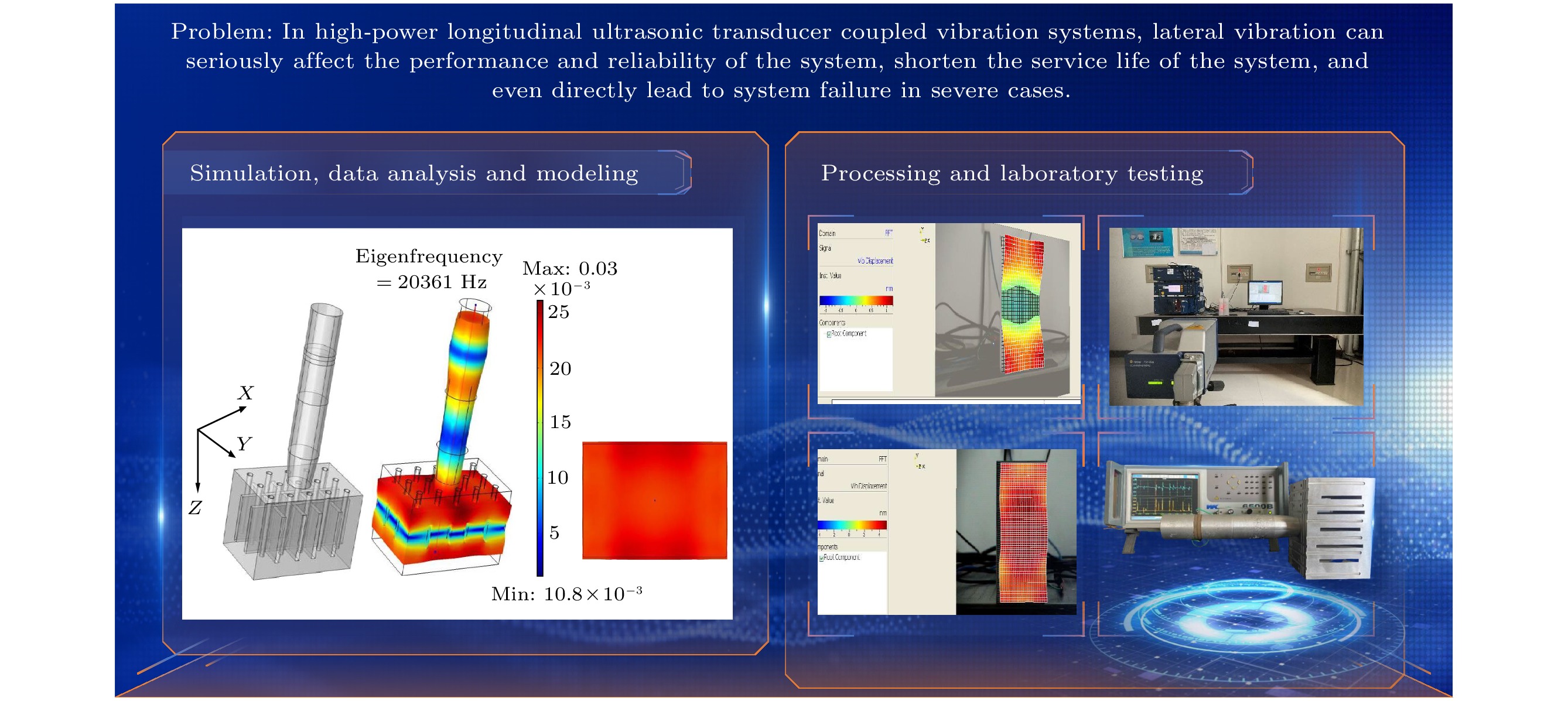
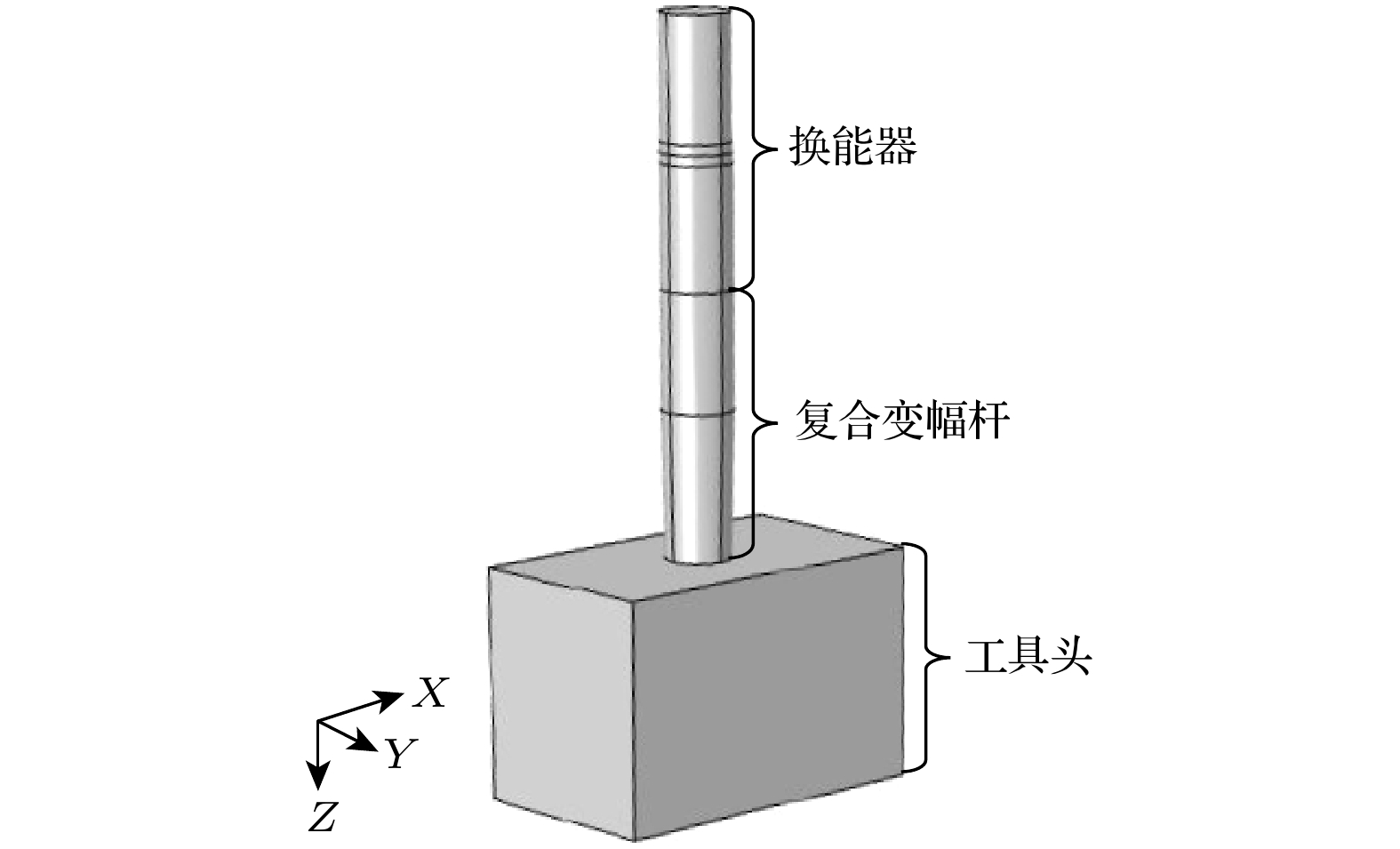
 DownLoad:
DownLoad:
